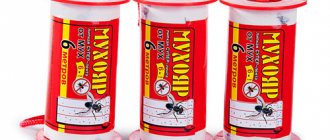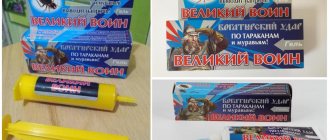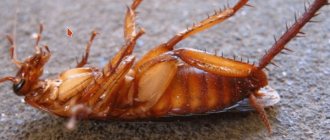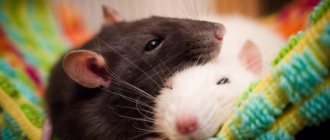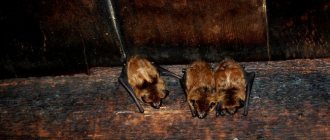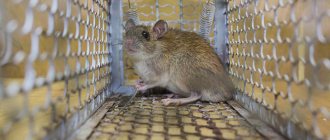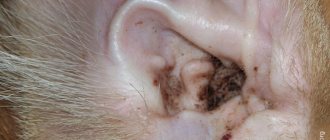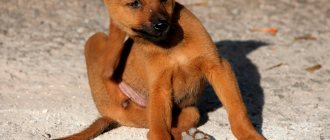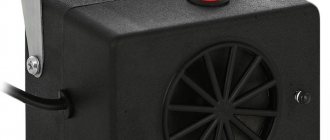The family Mouse or mice are small-sized animals of the mammalian class, belonging to the order of rodents, which has not been definitively classified. The huge family includes 4 subfamilies, which includes 147 genera and 701 species. Animals are found everywhere, especially the species of mice called brownies. People's attitude towards these representatives of the fauna is ambiguous. Some people fight them, trying to rid their home of uninvited “guests,” while others specifically breed and tame small rodents.
Appearance of mice
It is difficult to find a person who has never met mice in his life. The fact is that many representatives of this family live next to humans for thousands of years. They not only live, but constantly annoy people with their presence. In addition, they spoil food, furniture, clothes and everyday items. Over the long history of coexistence, the mouse has become the hero of some cartoons, and some of the species have become pets. Mice are easy to distinguish from other species of mammals, as they differ in their characteristic features. For example:
- They have an elongated body.
- The long tail can occupy up to 120 percent of the body.
- The head is small with a blunt or elongated muzzle.
- Ears can be large or barely noticeable.
- Small eyes resemble small beads in appearance.
- The nose is small and pink in color.
- The hind legs are designed so that the animal can jump and also rise up, leaning on the outstretched foot.
- The forelimbs are slightly smaller than the hind limbs.
Interesting to know! Mice can be distinguished by the presence of long teeth located in the center of both the upper and lower jaws. The size of teeth changes every day by a couple of millimeters upward. Therefore, the animal constantly grinds them down, often gnawing wood products, including furniture.
Wool and color features
The entire body of mice is covered with coarse hair, the length of which depends on the type of animal and always feels smooth on the surface of the body. There are no mice with fluffy fur.
Coat color can also be very different. Under natural conditions, mice are found in gray, brown, red, black, and ocher colors. Quite rare, but there are albino mice, which are distinguished by white fur and red eyes and nose. If you pay attention to decorative mice, their color can be very diverse - blue, yellow, orange, smoky, etc. The abdomen and sides of mice are always lighter, with white hairs.
It is important to know! A wild mouse can be distinguished from mice that are found in human homes by the presence of a longitudinal strip of a dark or light shade on its back.
In some species of mice, the entire back is painted with longitudinal stripes, both dark and light shades.
Mice sizes
Mice are rodents that are not impressive in size. The body structure of different species is not noticeably different and has similarities. The maximum body length without a tail is within 13 cm, although species with a body length of about 9 centimeters are mainly found.
In nature, a mouse is capable of gaining weight of about 20 grams, although under conditions of intensive nutrition this weight can increase to 50 grams. In other words, animals that live next to humans are in more comfortable conditions compared to those that live in natural conditions.
MICE - INTERESTING FACTS
Are gerbils big or small?
This mouse, kept at home in our country, is in most cases a descendant of Native American females. The first gerbils were brought from the USA in the last century as laboratory material, an alternative to the classic white ones. In natural conditions in Russia you can find dwarf or Mongolian gerbils. In total, there are more than a hundred varieties of mice of this type in the world, both small and large.
Gerbils have different sizes and colors, but all species have the following in common:
- tassel on the tail;
- small ears compared to the head;
- pink or almost white nose;
- blunt muzzle shape;
- large eyes that make the animal look like a cartoon character drawn in anime style.
The main distinguishing feature of gerbils is their lack of a characteristic mouse odor. These animals are ideal pets for people prone to allergies. The size of gerbils depends on their immediate species - from babies 6-7 cm to large mice 12-13 cm in length, excluding the tail.
Mouse squad
Mice are classified as mammals because they give birth to live young. After birth, the female feeds her offspring with milk for a month. Each female has 8 nipples. After mating, the female carries the future mice for about 25 days. 9 days after giving birth, she can mate again and again bring forth offspring. Each time she can give birth to from 1 to 12 cubs. She can become pregnant up to 5 times in a year. The rodent population increases noticeably once every 7 years.
Newly born mice have no fur, no teeth, and they cannot see yet. After just 1 week, the offspring have teeth and hair begins to grow, and after another 20 days they can feed on their own. After 3 months, the young offspring are able to fertilize themselves, increasing the rodent population.
Distribution area of the animal
The animal is widespread in the following regions:
- Altai.
- Sayans.
- Eastern Siberia.
- Far East.
The animal’s settlement territory begins in the west of Altai, running in a narrow strip across Siberia, reaching Transbaikalia. The animal spreads all the way to northern Mongolia, reaches the Pacific Ocean, Japan and the territory of Sakhalin.
In the Far Eastern territories, individuals live in areas as far as Manchuria, Korea and China. The animals are found almost to the borders of Burma.
Diet of mice
In addition to the fact that the mouse is an omnivore, it has to constantly chew something in order to wear down its teeth, which are constantly growing. In this regard, it seems that the rodent eats ingredients that are not at all edible. Therefore, her appetite is explained by some features of her life. So:
- Mice constantly chew on hard objects to keep their teeth from reaching gigantic proportions.
- Mice digest food quickly because they are constantly on the move. During the day, the animal should eat at least 5 grams of food and drink up to 20 ml of water.
- Mice are distinguished by one characteristic feature - they taste all new objects.
The mouse is considered a predator that prefers food of plant origin. She eats worms, insects, chicks, eggs, due to which she replenishes her body with proteins. In addition, if she climbs into the nest of the chicks, she will eat them, and then she will set up her own mouse nest in the bird’s nest.
Despite this, she happily eats seeds, roots and greenery of plants. If there is not enough food for her, then she turns to vegetables, fruits and berries.
Interesting Facts! Having settled in a human home, mice eat everything - sausage, cheese, meat, lard, cookies, candy, soap, napkins, toilet paper and other non-food components. I can’t even dare say that a mouse is a predator.
Tank bulimia
Faced with Russian KV tanks - thick-armored big men armed with guns up to 152 mm in caliber - the Germans, apparently, firmly decided not to be surprised by anything. Therefore, intelligence reports, according to which the Red Army was supposed to acquire even heavier tanks, were taken with complete seriousness - and they decided to act proactively.
In March 1942, the companies Krupp and Porsche received an unusual order. Porsche was supposed to create a chassis for the new Ubertank, and Krupp was to develop and manufacture turrets for future monsters. The mass of the unborn child should have reached hundreds of tons.
If compared with the same KV or IS-2, then a lot. But for a hefty fool with armor up to 220 millimeters, this, of course, was not enough. Moreover, they planned to arm the tank to match its defense - at least with a 128-mm gun based on a large anti-aircraft gun. Although they could have installed 150 mm or 170 mm - at least they thought about it at some stages.
Apparently, the Germans suspected something about Warhammer, which had not yet been created in the bins of hostile England.” This is the only way to substantiate the fact that at various points in the design they were thinking of adding a 20-mm (or even 37-mm!) autocannon to the tank for firing at aircraft - and flamethrowers located, characteristically, at the rear.
Mouse Prototype"
Despite the fact that most of this nonsense was abandoned, the mass of the projected Mouse grew steadily. By May 1942 it had increased to 120 tons. The more time passed, the clearer it became that the designers would not be able to fit the planned car into the given framework. In the fall, the “paper” tank exceeded one and a half hundred tons, and in the spring of 1943 it grew to almost 180. And the manufactured prototype ultimately weighed all 188 tons!
Characteristic features of life
It is believed that mice are quite timid by nature. This may be true, but if the mouse does not behave this way, then it will not survive, since it has a sufficient number of natural enemies.
In the wild, the mouse adapts to various conditions of its existence: it crawls, swims, digs holes in the ground, and some species have learned to fly. Such abilities of such a small mammal allow it to survive in such harsh natural conditions.
A mouse can build its nest anywhere - underground, in the hollows of old trees, in bird nests, under stones, etc. When she settles in a person’s house, her nest can be found under the floor, in the attic, in the basement, in the openings between the walls. The rodent goes hunting at night, but does not go far from its nest. During the daytime, mice sit quietly in their hiding places.
Interesting Facts! Some species of mice live in large packs, where the head of the pack is a male with several females. Each individual is responsible for its own territory, where it obtains food for itself. The offspring are raised by all females together, and after they reach “adulthood”, the young are expelled from the pack.
Mice wait out the winter in different conditions. For example:
- In the ground, in deep holes.
- In hay or straw stacks.
- In outbuildings for various purposes.
Mice that spend the winter in natural conditions store food supplies for the winter. To do this, rodents set aside special places in their burrows where they carry everything that could be useful in winter, just so as not to die of starvation.
Mice have a sufficient number of natural enemies - these are reptiles, hedgehogs, cats, dogs, foxes, as well as other birds of prey and animals.
In nature, a mouse can live no more than a year, although at the genetic level the term is about 5 years. This is due to the fact that this rodent has too many natural enemies. In artificial conditions, rodents live for about 3 years, and in laboratory conditions - 7 years.
Deanmark AirMouse
Take a look at the Deanmark AirMouse
— it seems that some developers have reconsidered science fiction films. This “mouse” is worn on your hand, just like in a movie about the future. You don't need a mat to control the cursor, and the table surface is generally not necessary. The laser sensor built into the “glove” is responsible for moving the cursor, and sensors placed on the index and middle fingers are responsible for right and left clicks. The device automatically detects your hand position and turns off when you start typing.
AirMouse does not put stress on the joints, like classic rodents, and does not lead to carpal tunnel syndrome. The happy owner will be able to choose the color and fabric material he likes - the mouse elements can be easily detached. They say the built-in battery lasts for a week; The mouse should appear in stores by the end of the year. We don’t know about you, but we are already eager to test the device in action.
Types of mice with photos and names
Each species of mouse has some characteristics that are dictated by their living conditions. The main difference is their size and color. If you study the characteristics of each species, it is easy to distinguish them from each other.
Little mouse
The smallest representative of the mouse family. The length of the body and tail does not exceed 7 centimeters, so the animal easily fits in the palm of even a child. The rodent forms its nests from grass and small plant branches. Thanks to its tenacious paws with sharp claws, the mouse easily climbs trees. It tolerates winter frosts well, so it behaves actively even in winter.
The coat color is more red, so it is called a yellow mouse. As for the color of the abdomen, muzzle and tips of the ears, it is almost white. This small rodent can cause significant damage to garden crops. Mainly prefers to eat plant foods, but occasionally eats small worms and beetles.
Wood mouse
Already from the name it becomes clear where this animal lives. The forest mouse grows up to 10 cm in length, while the tail is about 7 cm long. It settles mainly on forest edges. It is distinguished by a sharp muzzle and dark red, sometimes almost black color. A distinctive feature of this rodent is the size of its ears - they are large. This type of mouse became the prototype of the hero of one of the cartoons called “Mickey Mouse”. They are not only big, but also round.
A wood mouse can build a nest for itself either in an earthen hole or in a tree, as high as possible. Waits out the winter in burrows. Up to 2 meters deep. During thaws it can be seen in the snow. An absolutely harmless living creature for humans, but a threat to garden plants.
Gerbil
The USA is considered the birthplace of the gerbil. The rodent was brought in for laboratories. Who carried out special studies. After this, the gerbil became widespread and was kept as a pet. The advantage of this rodent is that it does not have the characteristic “mouse” smell. This animal has a rather cute and attractive appearance. In nature, there are up to hundreds of varieties of this unique creature. The dwarf and Mongolian varieties of gerbil are extremely popular.
The back of this attractive creature is brownish-red, and the belly is almost white. A contrasting dark stripe runs along the back. The nose is pink, the ears are small and round, and the muzzle is blunt. This species has slightly larger eyes compared to other mouse species. Another feature is the presence of a tassel at the tip of the tail.
Steppe mouse
The steppe mouse is similar in appearance to the gerbil mouse and grows up to 7 cm in length, while the length of the tail is one third longer than its body. It can cause serious damage to agriculture because it lives in the wild. Lives in deep burrows, stocking them for the winter. It settles in cereal fields, as well as among bushes located near water bodies. For the normal functioning of this pest, dense thickets of grass or bushes are necessary. This type of mouse is often called voles. They are also active in winter, as evidenced by their numerous tracks in the snow.
House mouse
It is considered the most widespread rodent on the planet. With the onset of cold weather, it tries to move closer to people. It is not a problem to find it even on the upper floors of apartment buildings. The pest is still the same! His teeth affect food, things, furniture, interior items, as well as electrical wiring, which often leads to fires.
It grows up to 6 cm in length and has a gray coat color. The rodent's tail is small, its muzzle is slightly elongated, and its ears are small and round.
White mouse
In fact, these are albino mice that can appear in any of the rodent species. This is due to failures in genetics, due to which the coat becomes pure white. As a rule, white mice always have red eyes. Such specimens can often be seen within the walls of laboratories.
Recently, it was possible to breed a white breed of mice with ordinary, black eyes. This type of mouse is very popular among pet lovers.
In conclusion, it is worth noting that throughout our history man has been fighting these rodents, and they still exist.
All About Pets: Decorative Mice
Dimensions of the gray rodent
The house mouse is the most numerous species of rodent. Lives everywhere, known throughout the world, except in areas covered with ice. There is no animal high in the mountains, but it lives calmly at the foot. With the onset of cold weather, the house mouse moves closer to human homes, successfully winters, and in the spring returns to its natural environment.
Land mice The body is only 10 cm. The animal does not grow any more, genetics do not allow it. Even in laboratory conditions it was not possible to overcome this limit. Tail 60% of body length. Maximum weight - 30 g. The color is predominantly gray, but there are regional differences. There is sandy, black, dark brown. Among the domesticated pets are white and blue.
The largest mouse in the world can be seen in photos on the Internet or while traveling in warm countries. In our area, rodents are not impressive in size. Stories about huge creatures in underground tunnels and mines are a play of the imagination.
Great gopher
The rodent from the order of gophers is also called the “reddish gopher.” And even though it is significantly inferior in body length and weight to its rodent relatives, it is, in its own way, a fairly large mammal.
The weight of an adult gopher during hibernation, when it has gained subcutaneous fat, reaches 1.5 kilograms, but its length ranges from 24 to 33 centimeters.
But the largest gopher in Russia is the yellow gopher, whose weight reaches 1.6 kilograms. Note that the yellow gopher causes the least damage to cereal crops.
Flanders
The animal was nicknamed the Belgian giant because of its incredible size among the representatives of the rabbit family. An adult rodent grows up to 70 centimeters in length, and particularly well-fed individuals can weigh 24-25 kilograms.
Flanders are bred to obtain skins with thick, beautiful fur, from which sheepskin coats, mittens, hats, and nutritious meat are sewn. Less commonly, this breed is kept as a decorative pet. Belgian giants are famous for their fertility. A person who decides to engage in rabbit breeding by purchasing a pair of flanders will become the owner of a large rabbit farm in 2 years.
Interesting! Long observations of the behavior of Flanders allowed scientists to conclude that they are very smart and friendly. Rodents easily make contact with people and get along with other pets in the house.
Habits of the animal
The animal is an inhabitant of forests and forest-steppe zones. The animal inhabits:
- Edges.
- Outskirts of the taiga.
- Small forests.
- Cuttings.
- River Urems.
This creature is least often found in unmixed coniferous forests. For example, in Transbaikalia, representatives of this mouse family densely inhabit the banks of taiga rivers, often settling near dams near mills.
The animal does not like swampy and dark areas. The animal feels good in tall and light forests. It also often happens that representatives of this species are spotted plowing.
This animal feeds mainly on bones and seeds of trees, which makes the animal a serious pest.
Often the seeds of valuable tree species are destroyed by representatives of this family. However, in some cases, animals, on the contrary, contribute to the spread of seeds. They eat bones and seeds:
- bird cherry;
- Siberian apricot;
- lemongrass;
- hazel;
- wild apple trees and others.
The largest mouse in the world (photos of which you see in this article) reproduces only in the warm season. The breeding season begins either at the end of April or at the beginning of May, and continues until the end of August. In one litter, a female can bring up to nine mice, which will become almost adults in a few months. To feed babies, there are 4 pairs of nipples on the female’s belly. A large mouse gives birth to two litters of cubs per summer.
- TOP 10 ergonomic mice for computers 2018
How tiny are baby mice?
There are large mice, but the little ones are the smallest, which is why they got their name. The length of their body does not exceed 7 cm. The length of the tail is proportional to the body. These are the mice that fit in the smallest palm.
Size also determines lifestyle. In natural conditions, babies do not dig holes; they make homes in the grass, building something resembling a nest. The special moments in their lifestyle do not end there. These little mice quickly climb trees, do not hibernate, can easily tolerate cold, and are not against snacking on protein products, that is, worms, insect larvae or someone's eggs.
The fur of the babies is ocher, yellowish, sometimes with red. The belly, tips of the ears and muzzle are white. In nature, these mice live everywhere, but due to the fight against pests of crops, gardens and vegetable gardens, their numbers have dropped significantly. It is most likely to meet babies in their natural habitat in the Caucasus, in the southern regions of Yakutia and Great Britain.
What do they eat and where do they live?
Despite their impressive size, large bats are not predators. They feed on bananas, papaya, avocado and mango. Excellent vision and sense of smell allow them to pick juicy fruits on the fly. Local farmers suffer considerable damage from mice.
Large bats live in tropical forests, where food can be found throughout the year. They can be found in Thailand, the Philippines, Malaysia, and Indonesia. However, many representatives can easily live in mountainous areas at an altitude of up to 1300 m, for example in Peru.
Like all representatives of the bat genus, flying foxes are nocturnal. While the sun is shining, they sleep peacefully, hanging head down, clinging to a tree branch or a stone ledge. Powerful wings serve as a reliable blanket for them.
Like every animal, these giants have enemies who hunt them. These are large snakes, birds of prey and animals. But the most terrible predator for them is man. The meat of flying foxes is eaten by the aborigines. This led to the fact that representatives of this order were on the verge of extinction, and only rescue measures taken made it possible to preserve the population.
Bats give birth to their young once a year. The gestation period is about six months. While the baby is small, he is next to his mother. But, having matured, you become part of the pack. Flying foxes are collective animals. They unite in large groups of up to 100 individuals.
Large voles?
This mouse is a rodent that is a character in folk and original fairy tales. It is voles who carry grain, live in barns and, in principle, prefer to live in close proximity to humans. The minimum body length of this animal is 7 cm. However, how large a vole mouse will grow depends on its diet. In rural barns, little mice can grow into larger animals than their counterparts born among the steppe feather grass.
A distinctive feature of this species of rodents, which distinguishes voles from all others, is the length of the tail. The proportional ratio with the body is 1:3. This species of mouse has a hamster mentality - they build pantries, constantly replenish food supplies and live in burrows with a lot of “rooms”.
Elecom Scope Node Wireless Mouse
Digital reality is making its own adjustments to the life of the inhabitants of this unfortunate planet. The hour is uncertain, the time will come when authorization on the Internet will be carried out by signature - then computer analysis will not let you lie and will easily weed out the violator. All that remains is to find a gadget that will allow you to easily and simply enter your own signature so that it does not look like a strange uneven squiggle.
Elecom Scope Node Wireless Mouse is already on sale
? The rodent with chopped shapes looks very futuristic, but this is not its main advantage. This mouse has a thumb rest, directly below which is a laser sensor - it is claimed that this layout greatly simplifies handwriting input. Presumably, illustrator designers will appreciate the device. The only negative of the Elecom Scope Node Wireless Mouse is the price of $130.
Information from the Guinness Book of Records
The mouse family is the most numerous species of mammals. More than 70 that run on the ground and several dozen flying ones. A photo of the world's largest mouse with wings was presented for public viewing on the Internet. The giant fruit bat is listed in the Guinness Book, it amazes with its size and unusual appearance.
The animal belongs to the flying fox species. It is distinguished not only by its huge wingspan, but also by its golden hue, which resembles a fox’s fur coat.
This amazing mammal with the ability to fly leads a vegetarian lifestyle and is found in tropical areas on the islands of Oceania. You can meet an unusual “bird” in Australia and Africa.
The body length is about 50 cm, the wingspan is 180 cm. The Guinness Book record holder has wings that swing out to a length of 2 m. The largest mouse weighs about 1.5 kg. For some reason it was not possible to weigh it accurately.
The largest mouse in the world among terrestrial creatures is found in mountainous areas and has received the appropriate name. In appearance it looks more like an elegant, sophisticated one. The body reaches a length of 17 cm, the tail itself is the same length. The large animal weighs about 60 g. Height is within 7 cm.
Another large representative is Asian. It differs from the mountain in the structure of its teeth and jaw, and from the mountain in the absence of a dark stripe on the back and a gray belly. The color is red, ocher, brown. The female's body length is 12 cm. The tail makes up 90% of the body length. Weight exceeds 50 g.
Since such rodents are not found in our area, the interesting question remains how big the common gray pest that lives in gardens, vegetable gardens, houses, and apartments can grow.
Capybara
The largest rodent in the world, it belongs to the capybara family, and lives off the coast of tropical reservoirs in Latin America.
Female capybaras are larger than males and weigh from 36 to 65 kilograms. We also note that the largest rodent at the withers reaches 50-60 centimeters.
These unusual animals live in small groups, in which the male predominates, but they are also found alone in nature. They lead a semi-aquatic lifestyle, trying not to move more than 1,000 meters from bodies of water.
Interestingly, about 300 years ago, the Catholic Church classified these unique animals as fish. This trick made it possible to consume capybara meat during Lent.
Are wood mice big?
This species of rodent got its name because of its habitat. These rodents settle in clearings, forest edges, and can also live in thickets of forests. This is not a very large mouse, the body length of the forest animal reaches 10 cm, and the tail rarely grows beyond 7 cm. But these mice are well-fed. The average weight of the animals is 20 grams, which is quite decent for such a not particularly large rodent.
Their fur color is dark - black, brown, red. The muzzle is specific - the nose is long and sharp. In addition to the shape of the nose, a distinctive feature of these animals is their gigantic ears, in comparison with the size of the head. Interestingly, it was from the wood mouse that such a world-famous cartoon character as Mickey Mouse was copied.
Average sizes determine the lifestyle of mice. These mice live differently, adapting to existing conditions. They can settle in tree hollows, dig deep burrows, or simply roost for the night among the branches or roots of trees.
Belgian giant
And now to domestic rodents. Two rabbits of this breed live in the UK, and their owners staged a competition to see which one could grow the biggest. It is a mistake to classify rabbits as rodents, because they belong to the order Lagomorpha. But people often refer to them as rodents. It is not for nothing that Carl Linnaeus initially identified rabbits and rodents as a single class of rodents.
Ralph the rabbit, with a weight of 22 kilograms, is the heaviest on the planet, but Darius made it into the book of records because of his body length, which is 1.3 meters.
Perhaps Darius will be overtaken by his own son, nicknamed Jeff. Which has already reached a length of 1 meter, and by the age of maturity the length of the rabbit can increase significantly.
And there is a very interesting article on thebiggest about the largest breeds of rabbits.
USB Mouse with Infrared Heater
Winters are becoming harsher and harsher - global climate change is making itself felt. As soon as you stay outside for a very short time, your fingers freeze and refuse to work even at home, in the warmth. What should an unfortunate blogger do, who has the most sparkling post in his head in the entire time of maintaining an electronic magazine? You can’t hesitate, the thought can disappear at any moment! USB Mouse with Infrared Heater will come to the rescue
with built-in heater. The device quickly heats up to 40-45 degrees Celsius - this will be enough to come to your senses. The heating function can be turned off once your fingers have thawed. The mouse will cope with heating much better than a cup of steaming coffee - it’s not so hot, there’s no chance of getting everything dirty. True, you will have to warm your hands one by one.
The mouse itself, of course, is unlikely to please lovers of exquisite design: the USB Mouse with Infrared Heater is no different from other rodents - two main buttons, a vertical scroll wheel. We recommend that anyone who feels sorry for $23 for a miracle of industrial design should stick their hands under running hot water.
